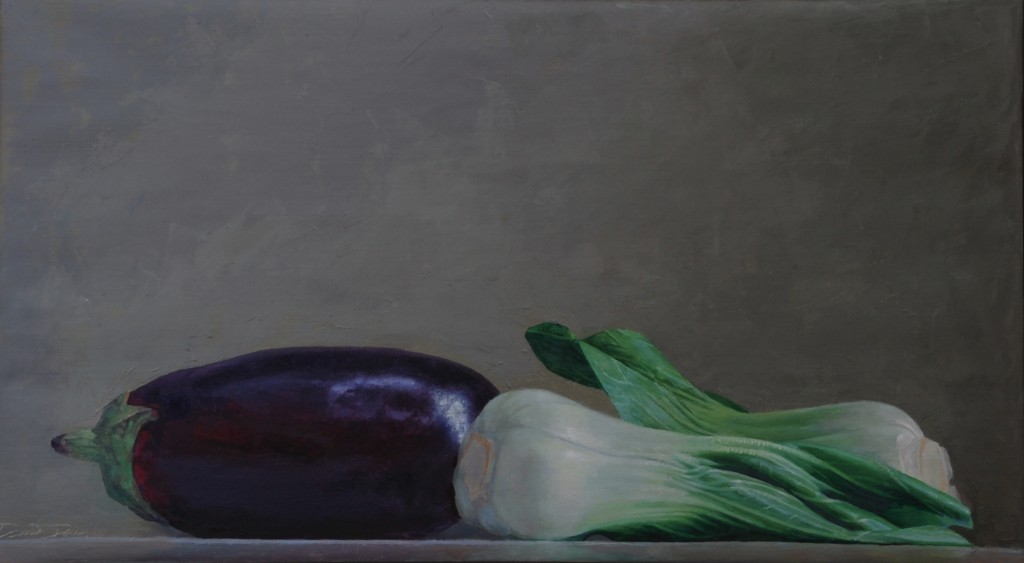Why I paint, once again
In July and August this year, visitors to our local museum in Rochester, the Memorial Art Gallery, will have the chance to press a few keys on their cell phones and listen to me and quite a few other artists talk about our work. This morning I recorded sixty seconds of commentary on painting and why I do it. I was fortunate this year to have three pieces chosen for MAG’s 64th Rochester-Finger Lakes Exhibition. All exhibitors were requested to record a brief artist’s statement for viewers to hear as part of a recorded tour. So, not only will those in attendance have a chance to see my work, but they can listen to me talk about it as they do. Off-hand, this strikes me as a little too much of David Dorsey for most people’s taste, but maybe it will be sufferable since I kept my recording within the time limit.
Once again, this has been a chance to face the challenge of the dreaded artist’s statement. I’ve approached this from many angles over the past few years, and it’s difficult to condense into a few words something as elusive and complex as the act of painting as well as the totality of what drives a person to paint. It’s like asking someone to say, in half a minute, why life matters. Especially if you have an aversion for sounding grandiose and/or pretentious, and I do have that aversion, despite all evidence to the contraryon this blog. So here’s what I came up
with, attempting to be as honest and direct as possible:
Like so many artists, I began painting in my teens. In those years, making art was a lot like rereading Catcher in the Rye—it more or less kept me alive. It was how I found meaning in a world that, at the time, made no sense to me. Van Gogh became a kind of guru to me, and I began to experiment with different ways to create images. Decades later, I’m still doing it. As an adult, like most artists, I found a day job. In my case, as a writer and author. It has kept me afloat, while I’ve continued to refine what I do as a painter. After the economic collapse of 2008 it’s become tougher to make a living as a writer, so I’ve made the counter-intuitive choice of focusing on something with even less of a regular income attached to it. It has done for me, decades later, what it did for me in my youth. It keeps opening my eyes. It makes the simple act of looking the most fundamental way of knowing the world. Painting, for me, is meditation. It requires an attentive eye, a receptive mind, and a willingness to keep discovering new ways to apprehend the wholeness of life.
So there you go. It’s perfectly accurate, yet it doesn’t really convey why painting seems so crucial to someone who has painted for decades. It doesn’t convey how painting seems to reconnect me with who I am by, paradoxically, making me forget myself. When I paint, I become so absorbed by the process that my personality and individuality seem pretty much beside the point, even though every mark I make is infused with who I am. I’m not intentionally making that happen, it’s just how painting works. So it essentially silences my jabbering mind, makes me forget myself, and turns me into a physical organism that is able to aim its empty awareness at an image for hours, days, weeks, slowly and carefully absorbing it and translating it into its representation in paint. So, as it turns out, I’m most myself when it feels as if I’m hardly there at all.
But above and behind this practice, there’s an urge to do justice to how incredible the most ordinary things look, how fascinating and beautiful the world is, just as it is. Again, the words “fascinating” and “beautiful” don’t convey the life, the “isness,” of ordinary objects and scenes. The urge to create something that conveys a moment’s “isness” seems to me an essential part of my urge to be alive. The burden for an artist is that it’s hard to just live your life without wanting to translate moments of your experience into a symbolic form that can trigger the same apprehensions and feelings that the moment itself conveyed. This is true of all creative work. Yet painting, like music, is more than a symbolic act. A word is almost entirely metaphorical: you have to learn a word’s correlative in the world, or at least know how it’s used, for it to do its job. Painting’s strength is that it has the power of illusion–it’s a sensory experience very close, sometimes, to the actual experience of seeing whatever is being represented. So, like Proust’s madeleine dipped in tea, it offers physical sensations that can release a sense of the world as a whole, bringing with it all sorts of intuitions that weren’t intentionally embedded in the image, the winter hidden in the summer heat, the night tucked away inside an afternoon nap. An image of anything can bear within it subconscious intuitions and sensations and emotions, beyond what the image actually depicts. And it communicates all of this instantly, at a glance. A painting means something, but you can’t pin down exactly what, if it’s any good, which is exactly how it goes with life as a whole. Which is to say painting matters the way life matters. Try putting that into words. I can’t. And that’s why I paint.

Comments are currently closed.